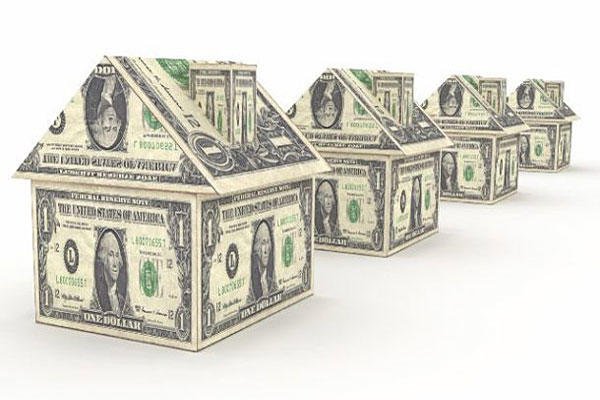 Military Update: Basic Allowance for Housing (BAH) paid to a million service members living off base in the United States will climb an average of 2.4 percent Jan. 1, or about $41 a month. Actual increases for individual BAH recipients will vary by Military Housing Area, pay grade, and dependency status.
Military Update: Basic Allowance for Housing (BAH) paid to a million service members living off base in the United States will climb an average of 2.4 percent Jan. 1, or about $41 a month. Actual increases for individual BAH recipients will vary by Military Housing Area, pay grade, and dependency status.
For a third straight year, BAH adjustments will not quite keep pace with the average rise in rent and utility costs, as the Department of Defense sticks to a five-year plan to trim the cost of stateside housing allowances gradually. The dampening of rates will continue until 2019 when recipients will be paying five percent of their off-base rental expenses out of pocket.
The three percent member “cost share” in 2017 will leave rates short of covering average rent and utility costs by a range of $37 to $85 a month, depending on individual circumstance, officials explained.
The impact on individuals will vary depending on housing choices. Those who rent a median-priced property will pay a small amount above their BAH rate, officials explained. “Members who choose to economize in their housing choices may have all their housing expenses covered.”
Many years ago, when BAH was first established for setting stateside housing allowances, rates covered only 80 percent of members’ rental costs. Congress gradually phased out that 20 percent cost-sharing formula. From 2005 until 2014, BAH was sustained high enough to cover full rental costs.
With the 2011 Budget Control Act and its mindless sequestration formula holding down military spending, however, Defense leaders began to press Congress to approve tighter controls on personnel spending including a slowdown in BAH increases.
Current law allows a dampening of BAH rate increases by a percentage point a year until the allowance covers only 95 percent of rental costs, leaving members to cover the rest with their basic pay or other family income, or to rent less expensive housing.
“Even with these modest adjustments to the computation method for setting Basic Allowance for Housing rates, members will still have sufficient means to obtain suitable housing,” Defense pay officials said in statement on the new rates.
Beyond the special dampening, rates are reset annually based on median market rents and average utility costs (electricity, heat, water and sewer) for six housing profiles, which is a combination of dwelling type (apartments, townhouses or single family homes) and number of bedrooms. Individual rates across more than 300 housing areas nationwide reflect local costs for the type of housing deemed appropriate for each pay grade, and for both those with and without dependents.
The BAH program in 2017 will cost $21 billion. Members can find their individual BAH rate online at Military.com.
In 2017, rates will fall in 82 housing area or 27 percent of the total. A rate protection provision, however, won’t BAH payments to fall for members already assigned to an area unless their pay grade is lowered or their dependency status changed. Rate protection recognizes that members commit to multi-year leases and need a stable allowance until they move.
But those newly assigned to areas with falling rental costs in 2017 will receive lower housing allowance than currently paid to settled peers. Of course their rental costs also should be lower, officials noted.
When recalculating rates, Defense officials gather fresh rental cost data from across the United States but local military housing offices direct such data collection away from apartment complexes and individual housing units deemed unsuitable for the military.
Again this year some areas will see large BAH hikes, such as an average 12 percent pop in Everett, Wash., and others sharp declines such as an average 11 percent drop in Minot, N.D, and 9 percent slide in Fort Huachuca, Ariz.
Service members living off base overseas don’t receive BAH. Instead they get an Overseas Housing Allowance based on what individual members actually pay to rent local housing. OHA gets adjusted periodically to keep pace with the dollar’s changing value against local currency.
Food Allowances -- Basic allowance for subsistence (BAS) rates will not change Jan. 1 because food prices were flat the past year. Monthly food allowance for officers will remain at $253.63 per month and enlisted BAS at $368.29. BAS, by law, is adjusted to keep pace with at-home food costs for males, ages 19 to 52, as tracked by the U.S. Department of Agriculture.
Send comments to Military Update, P.O. Box 231111, Centreville, VA, 20120, email milupdate@aol.com or twitter: Tom Philpott @Military_Update
# # # #
Tom Philpott has been breaking news for and about military people since 1977. After service in the Coast Guard, and 17 years as a reporter and senior editor with Army Times Publishing Company, Tom launched "Military Update," his syndicated weekly news column, in 1994. "Military Update" features timely news and analysis on issues affecting active duty members, reservists, retirees and their families.
Visit Tom Philpott's Military Update Archive to view his past articles.
Tom also edits a reader reaction column, "Military Forum." The online "home" for both features is Military.com.
 Tom's freelance articles have appeared in numerous magazines including The New Yorker, Reader's Digest and Washingtonian.
Tom's freelance articles have appeared in numerous magazines including The New Yorker, Reader's Digest and Washingtonian.
His critically-acclaimed book, Glory Denied, on the extraordinary ordeal and heroism of Col. Floyd "Jim" Thompson, the longest-held prisoner of war in American history, is available in hardcover and paperback.




